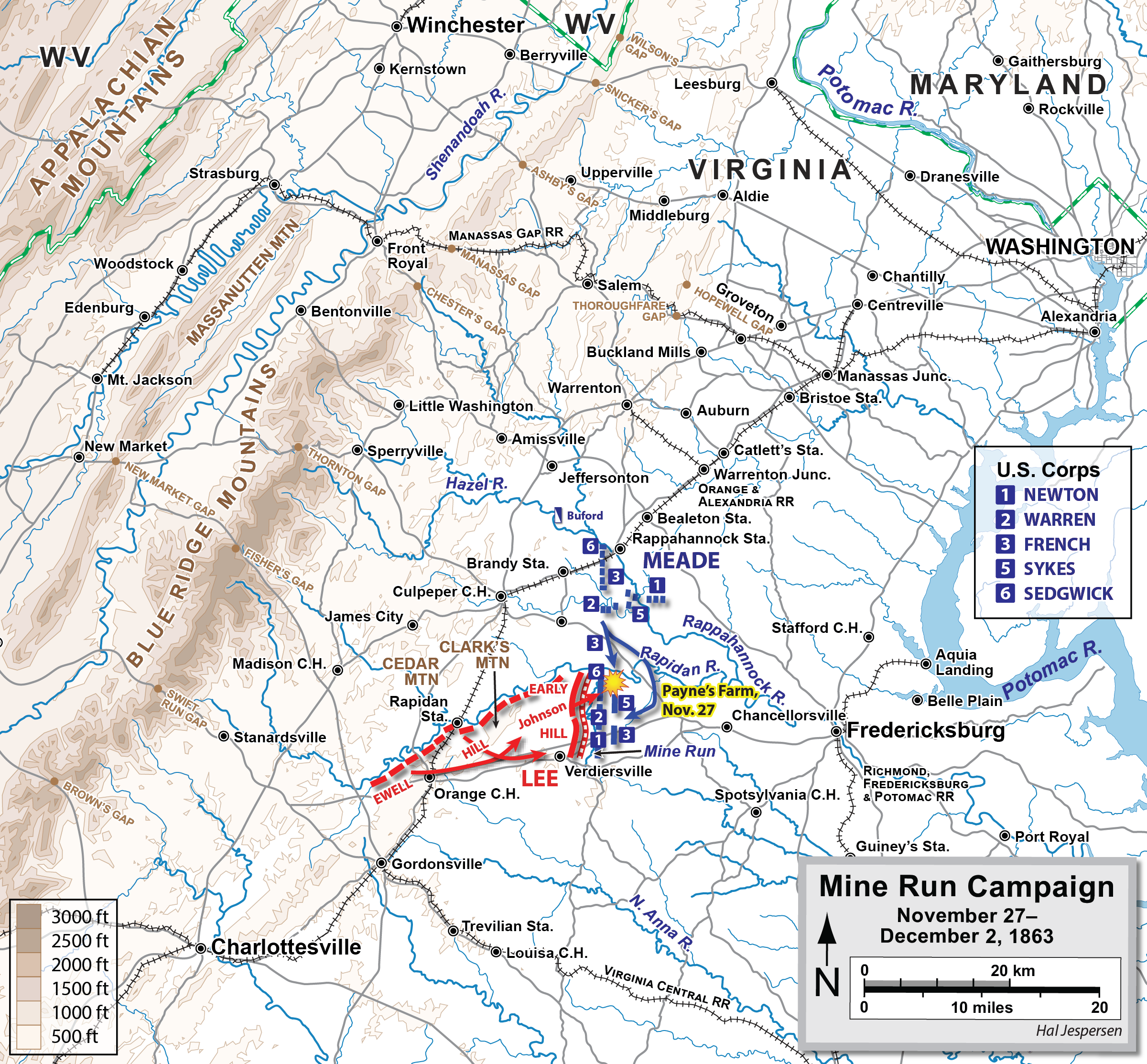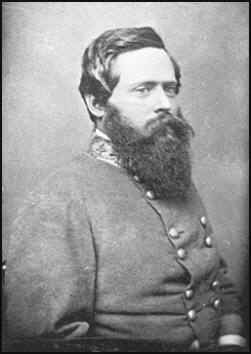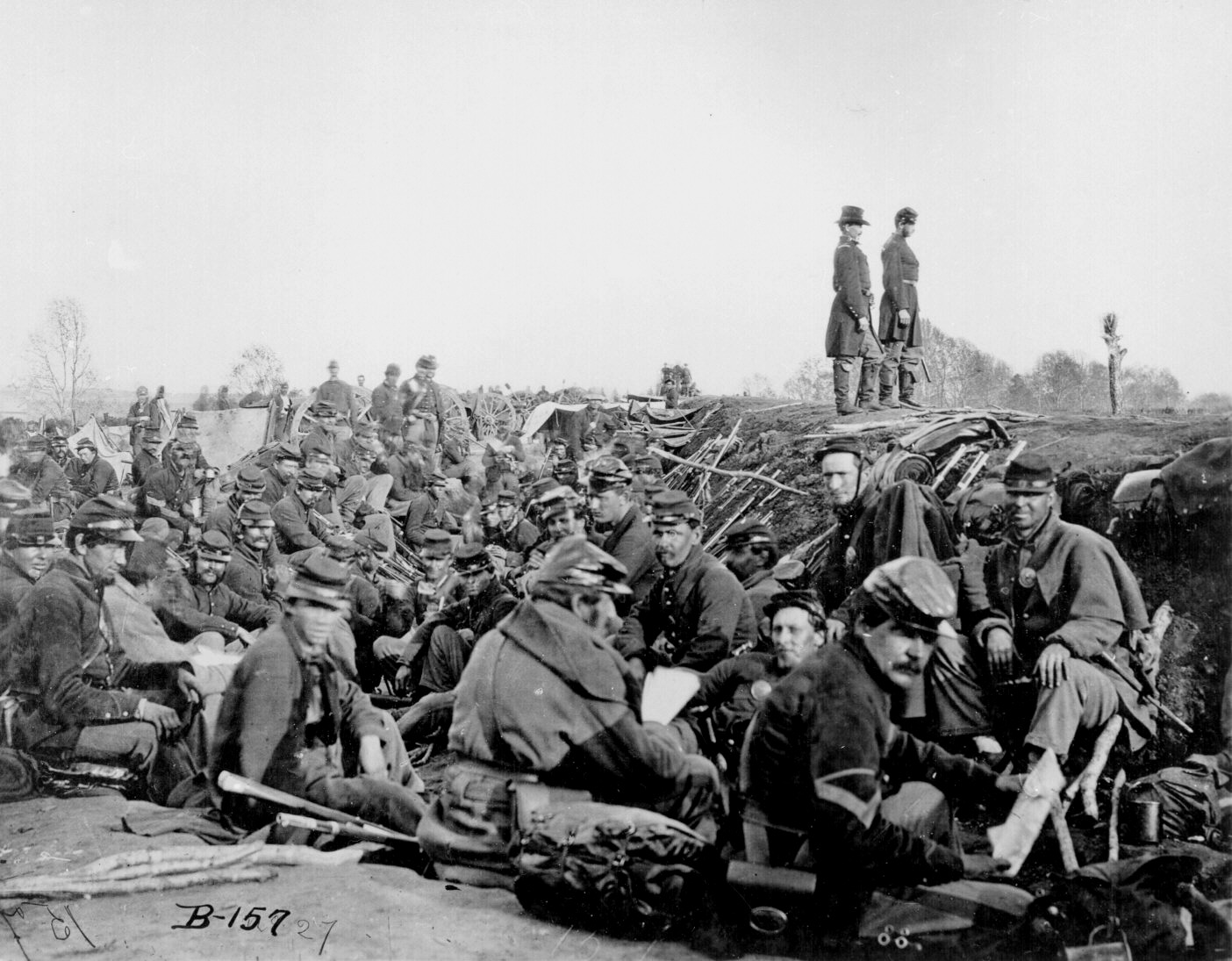|
James P. Landis
James Parker Landis (July 20, 1843 – December 1, 1924) was an American soldier who served in the Union Army during the American Civil War. He received the Medal of Honor for the capture of a Confederate flag during the Battle of Amelia Springs while serving as the Chief Bugler of the 1st Pennsylvania Cavalry. Early life James Parker Landis was born and raised in Mifflin County, Pennsylvania on July 20, 1843, to Martin and Mary Landis. By 1860 he resided in the community of Lewistown in Derry Township with his parents and older brother Joseph, who served as an apprentice plasterer to his father Martin, a master plasterer. Civil War Landis enlisted into the Union Army on August 18, 1861 from Lewistown, Pennsylvania. He then officially mustered for duty in Washington, D.C. on August 27, 1861 as a sergeant and bugler with Company C of the 1st Pennsylvania Cavalry (also known as the 44th Pennsylvania Volunteers). Military records at the time described him as being an 18-year ... [...More Info...] [...Related Items...] OR: [Wikipedia] [Google] [Baidu] |
Mifflin County, Pennsylvania
Mifflin County is a county in the Commonwealth of Pennsylvania. As of the 2020 census, the population was 46,143. Its county seat is Lewistown. The county was created on September 19, 1789, from parts of Cumberland County and Northumberland County. It was named for Thomas Mifflin, the first Governor of Pennsylvania. Mifflin County comprises the Lewistown, PA Micropolitan Statistical Area. The county is part of the Central Pennsylvania region of the state. Geography The county terrain is formed by the folded Appalachian Mountain ridges which run from southwest to northeast across the county. The terrain slopes to the northeast, with its highest point (Broad Mtn) East Northeast from the county's Northwest corner, just south of the county's border with Centre County. It measures Above sea level. The Juniata River flows northeast through the lower part of the county, exiting northeastward into Juniata County near Hawstone. The county has a total area of , of which is lan ... [...More Info...] [...Related Items...] OR: [Wikipedia] [Google] [Baidu] |
Mine Run Campaign
The Battle of Mine Run, also known as Payne's Farm, or New Hope Church, or the Mine Run campaign (November 27 – December 2, 1863), was conducted in Orange County, Virginia, in the American Civil War. An unsuccessful attempt of the Union Army, Union Army of the Potomac to defeat the Confederate States Army, Confederate Army of Northern Virginia, it was marked by false starts and low casualties and ended hostilities in the Eastern Theater of the American Civil War, Eastern Theater for the year. Background After the Battle of Gettysburg in July, Confederate Full General (CSA), Gen. Robert E. Lee and his command Retreat from Gettysburg, retreated back across the Potomac River into Virginia. Union commander Major general (United States), Maj. Gen. George G. Meade was widely criticized for failing to pursue aggressively and defeat Lee's army. Meade planned new offensives in Virginia for the fall. His first attempt was a series of inconclusive duels and maneuvers in October ... [...More Info...] [...Related Items...] OR: [Wikipedia] [Google] [Baidu] |
Medal Of Honor
The Medal of Honor (MOH) is the United States Armed Forces' highest Awards and decorations of the United States Armed Forces, military decoration and is awarded to recognize American United States Army, soldiers, United States Navy, sailors, United States Marine Corps, marines, United States Air Force, airmen, United States Space Force, guardians, and United States Coast Guard, coast guardsmen who have distinguished themselves by acts of valor. The medal is normally awarded by the president of the United States (the commander in chief of the armed forces) and is presented "in the name of the United States Congress." It is often referred to as the Congressional Medal of Honor, though the official name of the award is simply "Medal of Honor." There are three distinct variants of the medal: one for the United States Department of the Army, Department of the Army, awarded to soldiers; one for branches of the United States Department of the Navy, Department of the Navy, awarded to sa ... [...More Info...] [...Related Items...] OR: [Wikipedia] [Google] [Baidu] |
Battle Of Appomattox Court House
The Battle of Appomattox Court House, fought in Appomattox County, Virginia, on the morning of April 9, 1865, was one of the last, and ultimately one of the most consequential, battles of the American Civil War (1861–1865). It was the final engagement of Confederate General in Chief Robert E. Lee and his Army of Northern Virginia before they surrendered to the Union Army of the Potomac under the Commanding General of the United States Army, Ulysses S. Grant. Lee, having abandoned the Confederate capital of Richmond, Virginia, after the nine-and-a-half-month Siege of Petersburg and Richmond, retreated west, hoping to join his army with Confederate forces, the Army of Tennessee in North Carolina. Union infantry and cavalry forces under General Philip Sheridan pursued and cut off the Confederates' retreat at the central Virginia village of Appomattox Court House. Lee launched a last-ditch attack to break through the Union forces to his front, assuming the Union force consiste ... [...More Info...] [...Related Items...] OR: [Wikipedia] [Google] [Baidu] |
Battle Of Sailor's Creek
A battle is an occurrence of combat in warfare between opposing military units of any number or size. A war usually consists of multiple battles. In general, a battle is a military engagement that is well defined in duration, area, and force commitment. An engagement with only limited commitment between the forces and without decisive results is sometimes called a skirmish. The word "battle" can also be used infrequently to refer to an entire operational campaign, although this usage greatly diverges from its conventional or customary meaning. Generally, the word "battle" is used for such campaigns if referring to a protracted combat encounter in which either one or both of the combatants had the same methods, resources, and strategic objectives throughout the encounter. Some prominent examples of this would be the Battle of the Atlantic, Battle of Britain, and the Battle of France, all in World War II. Wars and military campaigns are guided by military strategy, whereas b ... [...More Info...] [...Related Items...] OR: [Wikipedia] [Google] [Baidu] |
Battle Of Amelia Springs
The Battle of Amelia Springs, Virginia was an engagement between the Union Army (Union Army of the Shenandoah, Army of the Shenandoah, Army of the Potomac and Army of the James) and Confederate States Army, Confederate Army of Northern Virginia that occurred on April 5, 1865 during the Appomattox Campaign of the American Civil War. It was followed by a second rear guard action near the same location on the night of April 5, 1865 and morning of April 6, 1865 during the Union Army pursuit of the Confederate forces (Army of Northern Virginia and Richmond local defense forces) which were fleeing westward after the fall of Siege of Petersburg, Petersburg and Richmond in the American Civil War, Richmond, Virginia at the Third Battle of Petersburg (sometimes shown as the Breakthrough at Petersburg) on April 2, 1865. The actions took place just prior to the Battle of Sailor's Creek (sometimes shown as "Sayler's Creek") on April 6, 1865. That battle would be the last major engagement betwee ... [...More Info...] [...Related Items...] OR: [Wikipedia] [Google] [Baidu] |
Battle Of Five Forks
The Battle of Five Forks was fought on April 1, 1865, southwest of Petersburg, Virginia, around the road junction of Five Forks, Dinwiddie County, at the end of the Siege of Petersburg, near the conclusion of the American Civil War. The Union Army commanded by Major General Philip Sheridan defeated a Confederate force from the Army of Northern Virginia commanded by Major General George Pickett. The Union force inflicted over 1,000 casualties on the Confederates and took up to 4,000 prisonersSome historians, such as Noah Andre Trudeau cited later, favor the lower Confederate casualty count of about 605 and lower prisoner count of about 2,400. while seizing Five Forks, the key to control of the South Side Railroad, a vital supply line and evacuation route. After the Battle of Dinwiddie Court House (March 31) at about 10:00 pm, V Corps infantry began to arrive near the battlefield to reinforce Sheridan's cavalry. Pickett's orders from his commander General Robert E. Lee ... [...More Info...] [...Related Items...] OR: [Wikipedia] [Google] [Baidu] |
Battle Of Hatcher's Run
The Battle of Hatcher's Run (also known as the Battle of Dabney's Mill) took place from February 5 to 7, 1865, during the American Civil War. Fighting occurred at several locations in Dinwiddie County, Virginia, southwest of Petersburg. The battle was part of the Petersburg Campaign and constituted Union Commander-in-Chief Lt. Gen. Ulysses S. Grant's 8th Offensive. On February 5, Grant and his Army of the Potomac commander Maj. Gen. George Meade, George G. Meade sent Maj. Gen. David McMurtrie Gregg’s cavalry division to disrupt a Confederate supply line along Boydton Plank Road around Dinwiddie Court House. However, Gregg discovered that the Confederates had largely abandoned the supply route. Later that day, under Gen. Robert E. Lee’s guidance, Confederate forces from Maj. Gen. John B. Gordon’s Corps and Lt. Gen. A. P. Hill’s Corps attacked one of the Union infantry forces (Maj. Gen. Andrew A. Humphreys commanding) sent to support the cavalry raid. The Federals ... [...More Info...] [...Related Items...] OR: [Wikipedia] [Google] [Baidu] |
First Battle Of Deep Bottom
The First Battle of Deep Bottom, also known as Darbytown, Strawberry Plains, New Market Road, or Gravel Hill, was fought July 27–29, 1864, at Deep Bottom in Henrico County, Virginia, as part of the Siege of Petersburg of the American Civil War. A Union force under Maj. Gens. Winfield S. Hancock and Philip H. Sheridan was sent on an expedition threatening Richmond, Virginia, and its railroads, intending to attract Confederate troops away from the Petersburg defensive line, in anticipation of the upcoming Battle of the Crater. The Union infantry and cavalry force was unable to break through the Confederate fortifications at Bailey's Creek and Fussell's Mill and was withdrawn, but it achieved its desired effect of momentarily reducing Confederate strength at Petersburg. Background Deep Bottom is the colloquial name for an area of the James River in Henrico County southeast of Richmond, Virginia, at a horseshoe-shaped bend in the river known as Jones Neck. It was a conven ... [...More Info...] [...Related Items...] OR: [Wikipedia] [Google] [Baidu] |
Siege Of Petersburg
The Richmond–Petersburg campaign was a series of battles around Petersburg, Virginia, fought from June 9, 1864, to March 25, 1865, during the American Civil War. Although it is more popularly known as the siege of Petersburg, it was not a classic military siege, in which a city is Encirclement, encircled with fortifications blocking all routes of ingress and egress, nor was it strictly limited to actions against Petersburg. The campaign consisted of nine months of trench warfare in which Union Army, Union forces commanded by Lieutenant general (United States), Lieutenant General Ulysses S. Grant assaulted Petersburg unsuccessfully and then constructed trench lines that eventually extended over from the eastern outskirts of Richmond, Virginia, to around the eastern and southern outskirts of Petersburg. Petersburg was crucial to the supply of Confederate States Army, Confederate General (CSA), General Robert E. Lee's army and the Confederate States of America, Confederate capi ... [...More Info...] [...Related Items...] OR: [Wikipedia] [Google] [Baidu] |
Battle Of Trevilian Station
The Battle of Trevilian Station (also called Trevilians) was fought on June 11–12, 1864, in Union Lt. Gen. Ulysses S. Grant's Overland Campaign against Confederate Gen. Robert E. Lee's Army of Northern Virginia. Union cavalry under Maj. Gen. Philip Sheridan fought against Confederate cavalry under Maj. Gens. Wade Hampton and Fitzhugh Lee in the bloodiest and largest all-cavalry battle of the war. Sheridan's objectives for his raid were to destroy stretches of the Virginia Central Railroad, provide a diversion that would occupy Confederate cavalry from understanding Grant's planned crossing of the James River, and link up with the army of Maj. Gen. David Hunter at Charlottesville. Hampton's cavalry beat Sheridan to the railroad at Trevilian Station and on June 11 they fought to a standstill. Brig. Gen. George A. Custer entered the Confederate rear area and captured Hampton's supply train, but soon became surrounded and fought desperately to avoid destruction. On June ... [...More Info...] [...Related Items...] OR: [Wikipedia] [Google] [Baidu] |









